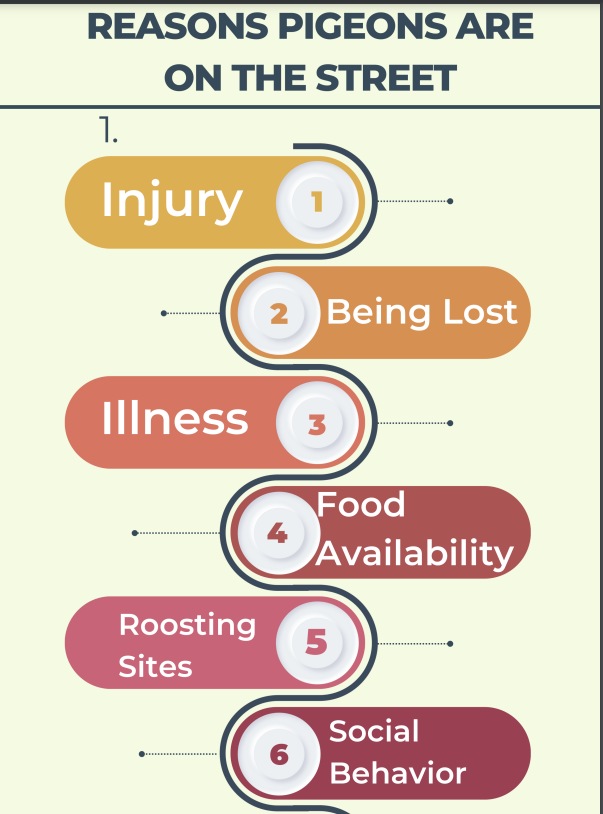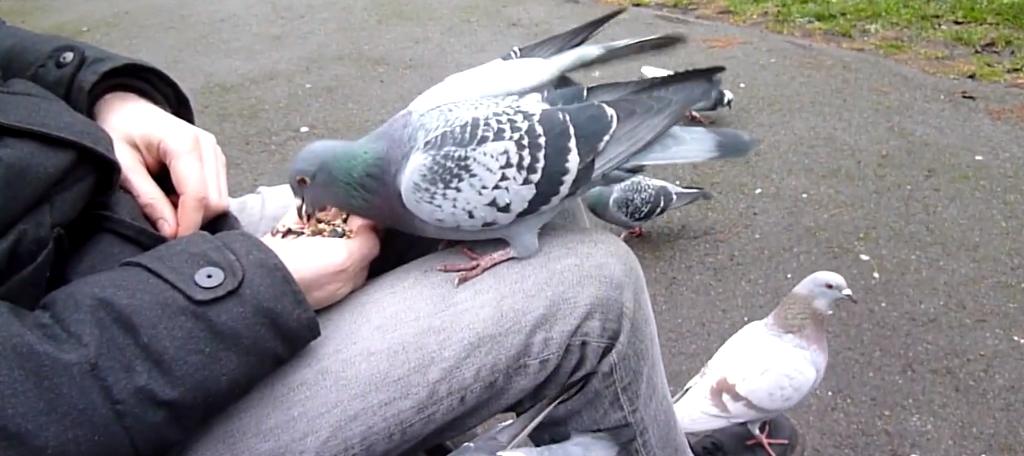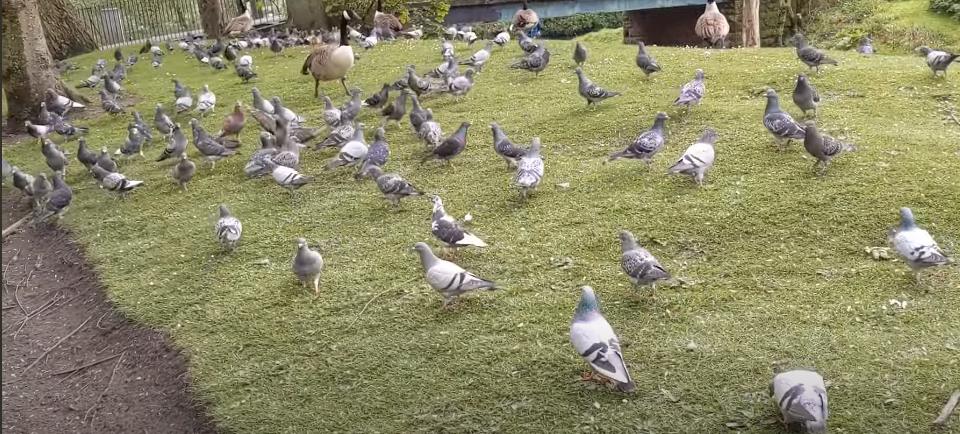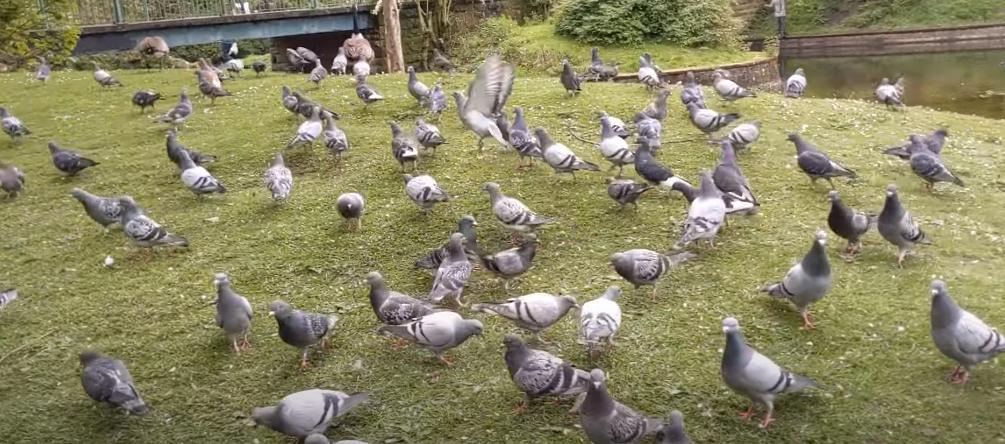Yes, you can take a pigeon off the street, but it’s essential to consider laws and ethics. In many places, pigeons are considered wild birds protected by law, so interfering with them may require permits or adherence to specific regulations.
Also, handling pigeons requires caution as they can transmit diseases to humans. It’s advisable to contact local animal control or wildlife rehabilitation services for guidance.
In 2019, over 10,000 wild birds were rehabilitated in the UK alone, emphasizing the importance of professional assistance.
Reasons Pigeons are on the Street

- InjuryPigeons, like many urban wildlife species, are susceptible to injuries resulting from interactions with human-made structures and vehicles. Collisions with cars, windows, or buildings can cause serious harm to pigeons, leaving them incapacitated and vulnerable on the streets. In densely populated areas, the risk of injury is heightened due to the increased human activity and infrastructure. Additionally, territorial disputes among pigeons can lead to aggressive encounters, resulting in injuries that necessitate seeking refuge in public spaces.
- Illness: Pigeons are not immune to the various diseases and health challenges that affect wildlife populations. Avian diseases such as avian pox, Newcastle disease, and paramyxovirus can afflict pigeons, compromising their health and mobility. Furthermore, parasites like mites, lice, and ticks can infest pigeon populations, causing discomfort and weakening their immune systems. When afflicted by illness or infestation, pigeons may seek shelter in urban environments, including streets and sidewalks, where they are exposed to additional stressors and risks.
- Being Lost: Despite their adaptability to urban environments, pigeons can become disoriented or lost under certain circumstances. Migration disruptions, such as adverse weather conditions or habitat alterations, can cause pigeons to deviate from their usual routes and end up in unfamiliar territories, including city streets. Additionally, disturbances in their nesting sites or roosting areas due to construction, pest control measures, or human interference can force pigeons to relocate temporarily, increasing the likelihood of being found on the streets.
- Food Availability: Pigeons are opportunistic feeders and are often attracted to areas with abundant food sources, such as streets with high pedestrian traffic or outdoor dining areas. The presence of discarded food scraps or intentional feeding by humans can attract pigeons to urban streets, where they forage for sustenance. Pigeons may sometimes linger in these areas longer than usual, leading to increased street sightings.
- Roosting Sites: Pigeons require suitable roosting sites for shelter and nesting, particularly during the night. Urban environments offer an array of roosting options, including ledges, rooftops, and building eaves. However, disturbances or alterations to these roosting sites, such as renovations, construction work, or pest control measures, can prompt pigeons to seek alternative locations, including streets and sidewalks, temporarily displacing them from their usual habitats.
- Social Behavior: Pigeons are highly social birds that often congregate in large flocks, especially in urban areas with plentiful resources. Social interactions, such as courtship displays, mating rituals, and group foraging, can bring pigeons together in public spaces, including streets and parks. These social gatherings may contribute to the perception of pigeons being frequently present on the streets, particularly in areas where human activities intersect with their natural behaviors.
Approaching and Capturing the Pigeon

Tips for Safely Approaching the Bird:
- Move slowly and quietly towards the pigeon to avoid startling it.
- Maintain a safe distance initially to allow the bird to acclimate to your presence.
- Speak softly in a reassuring tone to help calm the pigeon.
- Watch for signs of agitation or distress in the bird’s body language.
Methods for Capturing the Pigeon Without Causing Further Distress:
- Use a towel or blanket to gently cover the pigeon.
- Slowly encircle the bird with the fabric to facilitate a controlled capture.
- Offer food as a lure to entice the pigeon into a contained space.
- Use a cardboard box or pet carrier for safe transportation.
After Capturing the Pigeon
Steps to Take Once the Bird is in Your Care:
- Provide temporary shelter in a quiet, warm, and dark environment to reduce stress.
- Offer fresh water in a shallow dish to ensure hydration.
- Avoid feeding the pigeon unless instructed by a wildlife rehabilitation professional.
- Monitor the bird’s condition and behavior closely for any signs of improvement or deterioration.
Seeking Professional Help
Importance of Contacting Local Animal Control or Wildlife Rehabilitation Centers:
- Local authorities or wildlife rehabilitation centers have the expertise and resources to provide proper care.
- Professional intervention ensures the pigeon receives appropriate medical treatment and rehabilitation.
- Contacting experts also ensures compliance with legal regulations regarding wildlife rescue and rehabilitation.
Resources for Finding Assistance in Your Area:
- Search online for local animal control agencies or wildlife rehabilitation centers.
- Contact veterinary clinics or animal shelters for referrals to reputable wildlife professionals.
- Utilize community forums or social media groups for recommendations and assistance.
Warning Against Improper Care

Risks of Attempting to Care for the Pigeon Without Proper Training:
- Improper handling can exacerbate the pigeon’s injuries or stress.
- Incorrect feeding may cause digestive issues or nutritional deficiencies.
- Lack of medical knowledge could lead to misdiagnosis or inappropriate treatment.
- Attempting care without training may also violate legal regulations regarding wildlife rehabilitation.
Encouragement to Leave Care to Professionals:
- Emphasize the importance of seeking professional assistance for the pigeon’s welfare.
- Encourage individuals to prioritize the bird’s well-being by entrusting its care to experienced professionals.
- Remind them that professional intervention maximizes the pigeon’s chances of recovery and successful release back into the wild.

Hridoy, a dedicated pigeon enthusiast, is known for his deep affection for these feathered creatures. His passion for pigeons is evident in the way he cares for and cherishes them. From meticulously maintaining pigeon coops to studying their behavior, Hridoy’s love for these birds knows no bounds.
